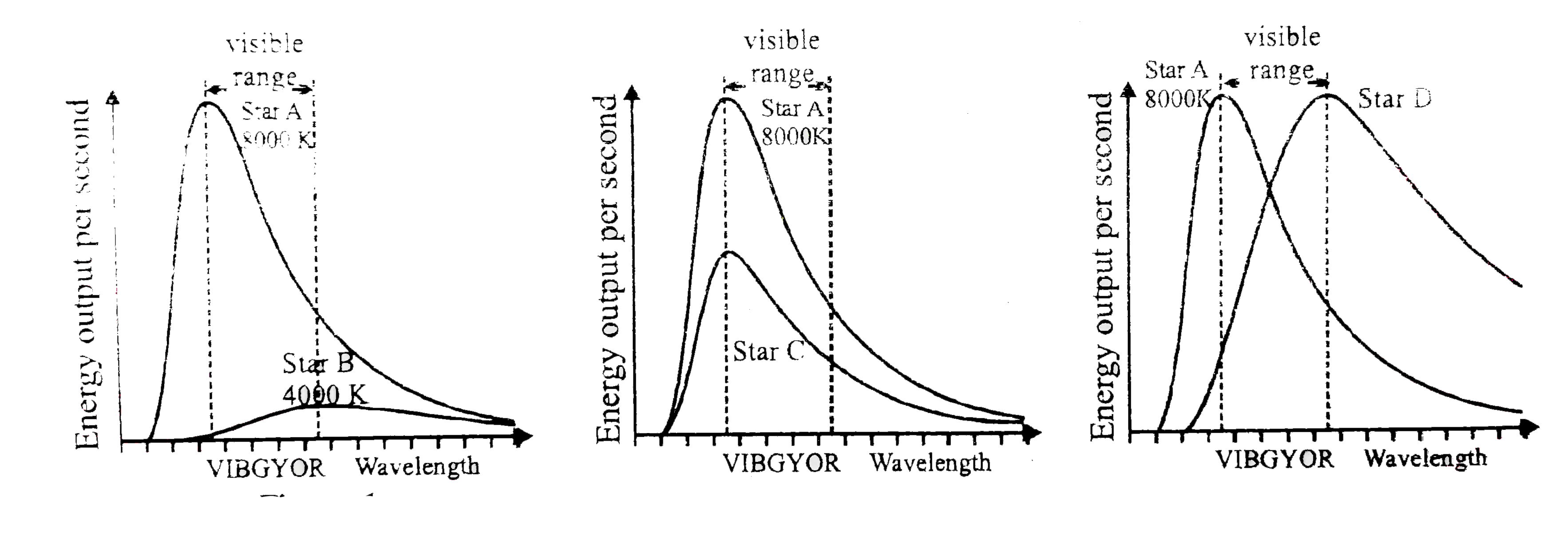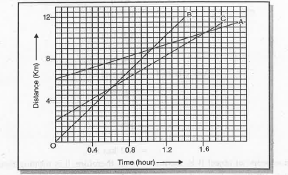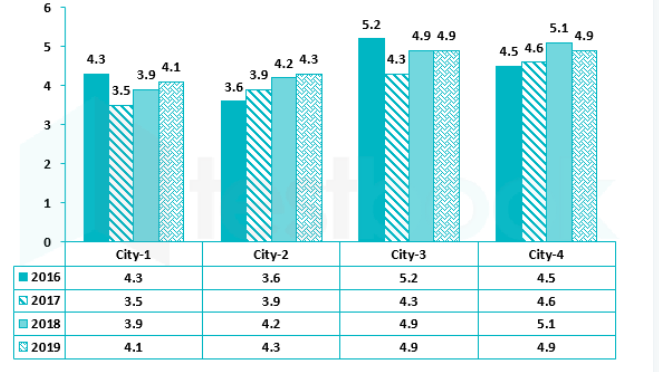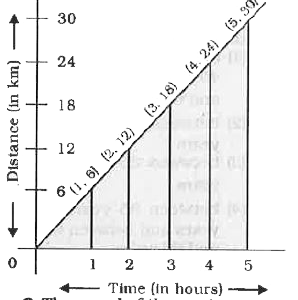The three graphs shwon here show the total energy output of four different stars per second plotted against the wavelength that they radiate. All the four stars are behaving like black bodies. They can be assumed to be spherical bodies. Study the graphs below and answer the following questions.

Take b=3×10−3mK.
Which of the following is the correct order of the radius of star A , Star C and Star D?
RA>RC>RD
RA=RD>RC
RD>RA>RC
RA>RD>RC
The correct Answer is:C
Topper's Solved these Questions
- TEST PAPERSBOOK - BANSALCHAPTER - TEST PAPERSEXERCISE - PHYSICS PART (A)
32 Videos
- TEST PAPERSBOOK - BANSALCHAPTER - TEST PAPERSEXERCISE - PHYSICS PART (B)
3 Videos
- TEST PAPERSBOOK - BANSALCHAPTER - TEST PAPERSEXERCISE - PHYSICS PART- C
4 Videos
- SEMICONDUCTORSBOOK - BANSALCHAPTER - SEMICONDUCTORSEXERCISE - CBSE Question
32 Videos
Similar Questions
Fig 1.11 show the distance - time graphs of three A,B and C. Study the graph and answer the following question : Which of the three is travelling the fastest ?

View SolutionThe following graph shows the sales of cars (in thousands) in four cities in 4 years. Study the graph and answer the question.

Which city has the highest sales?
View Solution
Knowledge Check
The three graphs shwon here show the total energy output of four different stars per second plotted against the wavelength that they radiate. All the four stars are behaving like black bodies. They can be assumed to be spherical bodies. Study the graphs below and answer the following questions.

Take b=3×10−3mK.
Which of the following statements correctly describes star C?AIt appears to be red in color and has temperature of 8000 KBIt appears to be blue in color and has temperature less than 8000 KCIt appears to be blue in color and has temperature 8000 KDIt appears to be red in color and has temperature more than 800 KThe three graphs shwon here show the total energy output of four different stars per second plotted against the wavelength that they radiate. All the four stars are behaving like black bodies. They can be assumed to be spherical bodies. Study the graphs below and answer the following questions.

Take b=3×10−3mK.
What is the peak wavelength of star A and star B respectively?A400nm ,800 n,B375 nm, 750 nmC280 nm, 340 nmD450 nm, 225 nmThe graph given here shows a car following the linear path with uniform speed. Study the graph and answer the questions.

The speed of the car isA12 km/hrB6 km/hrC18 km/hrD24 km/hr
The following graph shows the sales of cars (in thousands) in four cities in 4 years. Study the graph and answer the question

In which year. the sales are highest?
View SolutionA neutron star has a density equal to that of the nuclear matter. Assuming the staar to be spherical, find the radius of a neutron star whose mass is 4.0×1030kg (twice the mass of the sun ).
View SolutionA neutron star has a density equal to that of the nuclear matter. Assuming the staar to be spherical, find the radius of a neutron star whose mass is 4.0×1030kg (twice the mass of the sun ).
View SolutionThe spectra of all stars show a continuous spectrum like the solar spectrum, in which dark absorption lines are superimposed. The photosphere (inner layer of the star) emits radiations of all wavelengths, producing a continuous spectrum. On passing through the outer (comparatively cooler) layer of the star, radiations of certain wavelengths are selectively absorbed by this layer. This is the cause behind the dark lines in the star's spectrum. These dark lines are characteristics of the substances present in the outer layer of the star. For measuring the surface temperature of the star, we need to measure the wavelength at which the intensity of emitted radiation is maximum and then using Wien's displacement law, given below
λm=T=b where b is the Wien's constant and its experimentally determined value is 2.89×10−3mK
Which of the following options is true for spectrum of light received from a star?
View SolutionThe graph given here shows a car following the linear path with uniform speed. Study the graph and answer the questions.

The speed of the car (in metres per minute) is
View Solution
